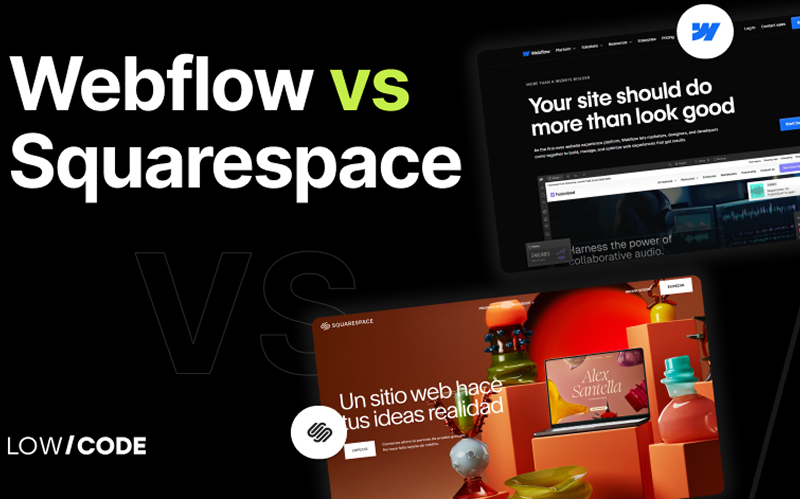

Table of Contents
Toggle- Overview of Squarespace Website CMS
- Overview of Webflow CMS
- Webflow and Squarespace Templates Comparison
- SEO and Digital Marketing
- Webflow AI Features
- Squarespace AI Features
- Webflow Pricing and Plans
- Squarespace Pricing and Plans
- Looking for the Best Website Agency for Your Website? Marediasoft is Here.
- Case Study: Walker & Dunlop - Commercial Real Estate Business
- Squarespace Vs Webflow: User Interface and Ease of Use
- Drag and Drop
- Reusable Components
- Pros and Cons Of Webflow
- Pros and Cons Of Squarespace
- Conclusion: Webflow and Squarespace
Overview of Squarespace Website CMS
Overview of Webflow CMS
Webflow and Squarespace Templates Comparison
Customizable Templates of Squarespace
Customizable Templates of Webflow
SEO and Digital Marketing
Webflow SEO and Digital Marketing
Squarespace SEO and Digital Marketing
Webflow AI Features
Squarespace AI Features
Webflow Pricing and Plans
Squarespace Pricing and Plans
Looking for the Best Website Agency for Your Website? Marediasoft is Here.
Why Choose Us?
- Divine Derriere, a leading brand known for offering innovative products and services; they partnered with us to enhance their online visibility and boost their sales.
- American Family Care, whose urgent care centers are staffed with experienced clinicians, works with you so you know precisely the diagnostic steps to a healthy recovery.
Get in Touch - Leading CMS Development Agency
With a focus on creativity, functionality, and user experience, you ensure your website looks great and delivers seamless performance and maximum engagement. you craft CMS-based websites that help your target audience connect with you effortlessly.
"Don't let outdated design or slow performance hold your business back! Partner with us today and get a fully optimized, visually striking website. Contact us now and take your brand to the next level!"
Case Study: Walker & Dunlop - Commercial Real Estate Business
- Scalability: The company operates across multiple markets, and Webflow enabled them to localize content for different regions effortlessly. This scalability contrasts with Squarespace’s more rigid structure, a point your blog might explore when discussing platform flexibility.
- Customization: Unlike Squarespace’s template-driven approach, Webflow allowed Walker & Dunlop to craft a bespoke design that aligned with their brand identity, featuring interactive elements like mortgage calculators and dynamic property listings.
Squarespace Vs Webflow: User Interface and Ease of Use
User Interface of Webflow
Webflow's user interface has 3 parts, left one with all the features, including pages, components, assets, variables, color selectors, apps, settings, and much more. The center is the editor, where you can see elements and apply customizations accordingly. The right side includes three tabs named style, setting, and interactions.
In the style tab, you have all the basic layout settings to ensure the website is optimized across devices, including paddings and margins, and you can also select among different layout options, including grid, box, flex, inline, and several others. The next tab, settings, has custom attributes features where you can add custom attributes to any elements, and the last one is the interactions, where you can set trigger actions for any specific page and the whole page.
User Interface of Squarespace
Squarespace provides the most straightforward user interface for every user, whether you are a beginner or an expert. Squarespace doesn't divide its website builder into parts. Instead, you can see Squarespace's sidebar on the left side, which covers one-fourth of the screen, and the rest includes the website editor.
The sidebar has many options, including the guide to start, a website where you will be able to customize the site, products, scheduling, email campaigns, analytics, and much more. In addition, you can customize the sidebar and choose which option should be shown.
Within the sidebar, below the menu, you can see the user icon with your avatar, along with the help center, sidebar customization, site settings where you can edit logos, and much more.
Drag and Drop
Webflow Drag and Drop
Squarespace Without Drag and Drop
Reusable Components
Webflow Components
Webflow, with its reusable components feature, makes it easier than other CMS website builders. The reusable components feature can be good for development, but once you use it and change the content in any part of the website, the rest where the component is used will also be altered.
Squarespace Without Components
Squarespace without reusable components features can be a good option for expert developers and designers because you can add the same elements or widgets repeatedly and edit each element separately, which will not affect the rest where this element is used.
Pros and Cons Of Webflow
Pros of Webflow
Cons of Webflow
Pros and Cons Of Squarespace
Pros of Squarespace
Squarespace offers you more straightforward email marketing campaign features. Squarespace also provides promotional banners, pre-designed layouts for lead generation and sales, and easy integration of Google ads.
Cons of Squarespace
Squarespace doesn't give control over SEO; it gives auto-generated meta descriptions and metadata, no control over sitemaps, and no control over URL structure. These are the important features a CMS website builder tool must have.
Conclusion: Webflow and Squarespace
Marediasoft
We are an agency with over 12 years of experience in web design and development for small businesses. Our custom, responsive web solutions are backed by high ratings from numerous reviews, reflecting our commitment to quality. With a diverse portfolio that includes notable clients like Vodafone, we offer affordable and effective services to help small businesses enhance their online presence.

